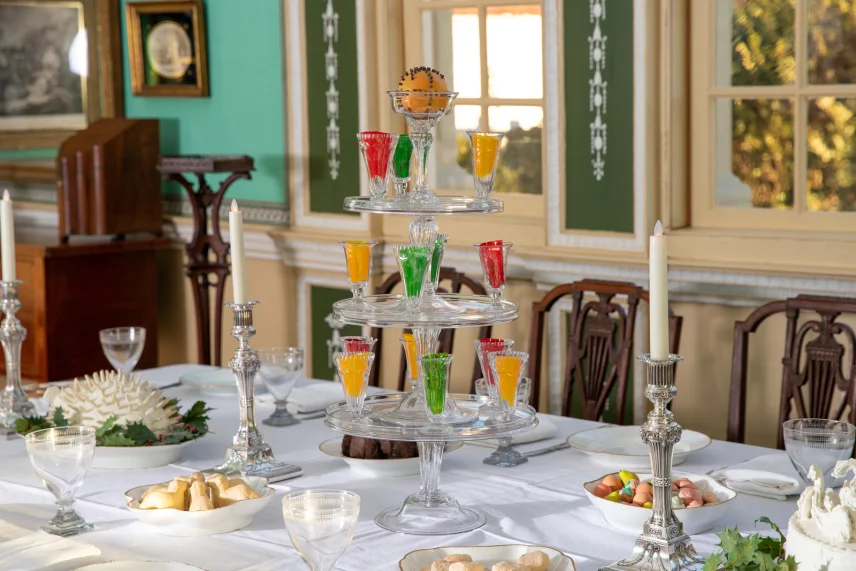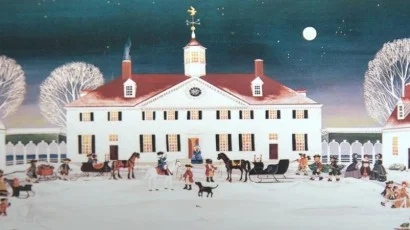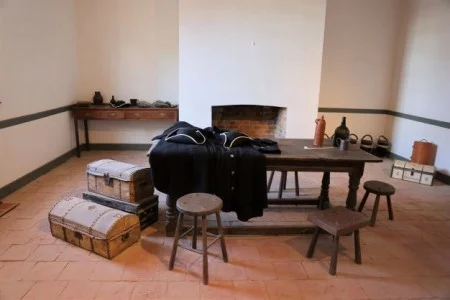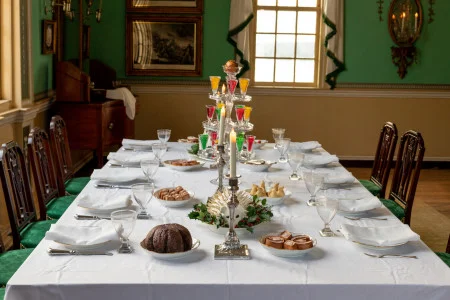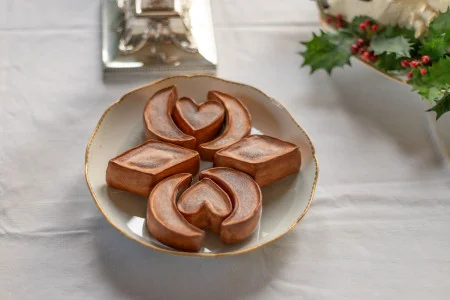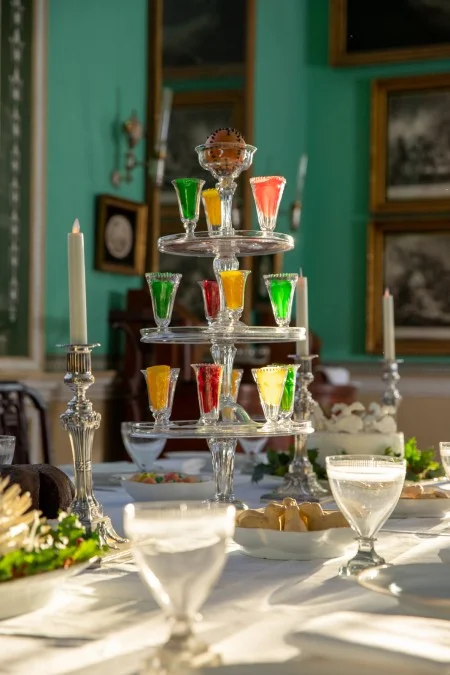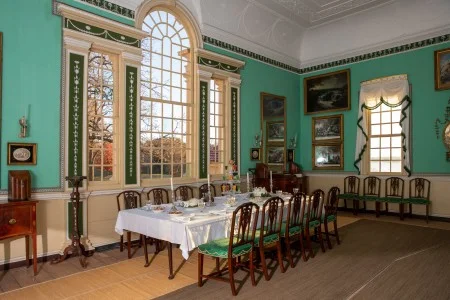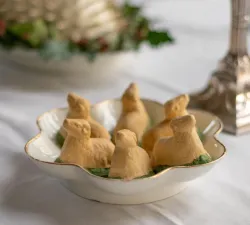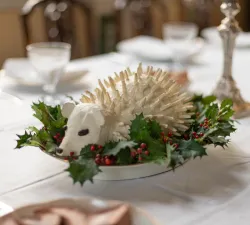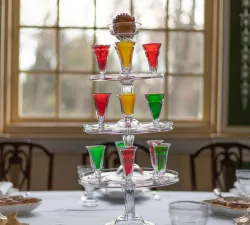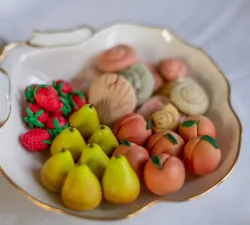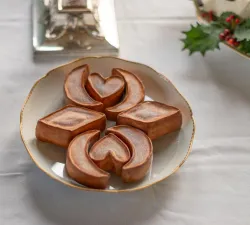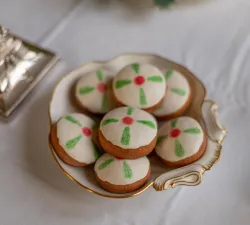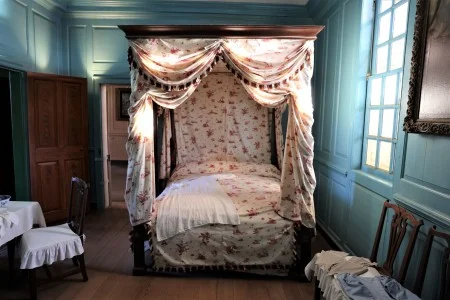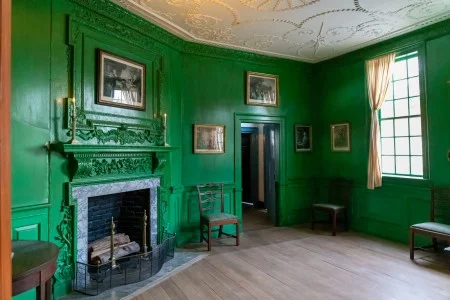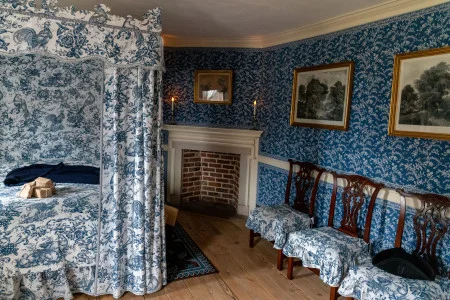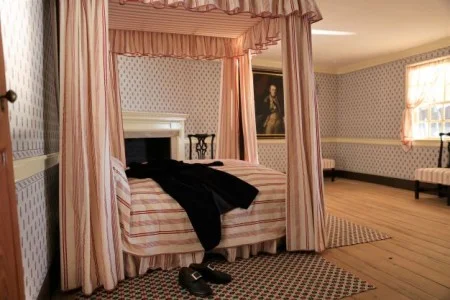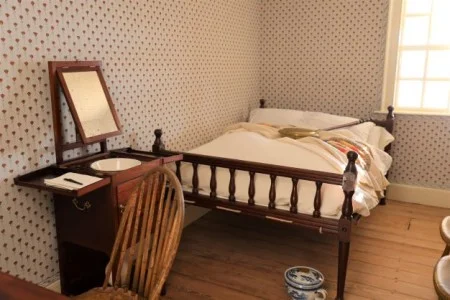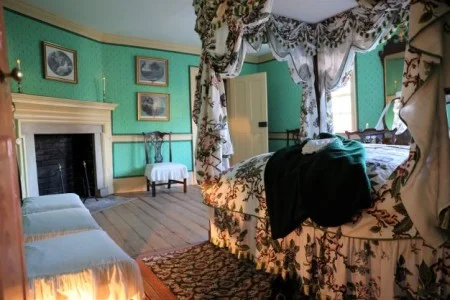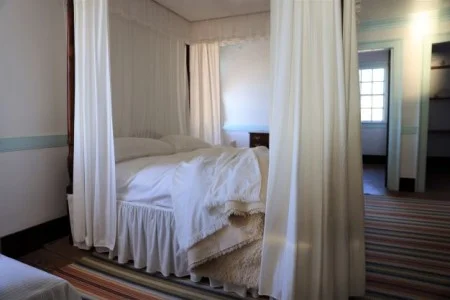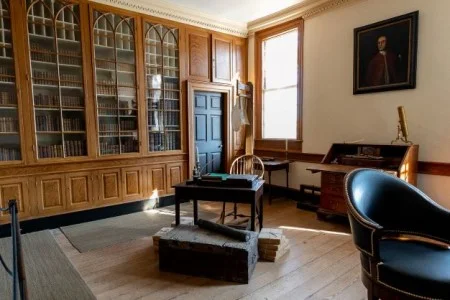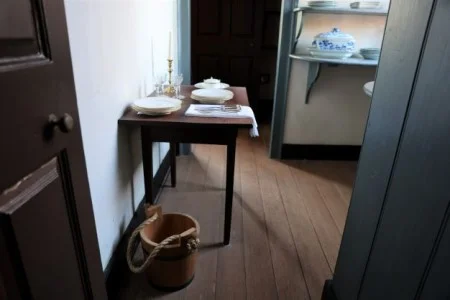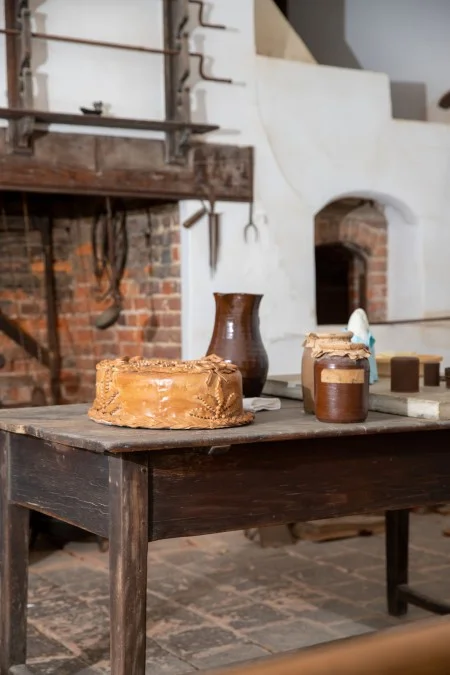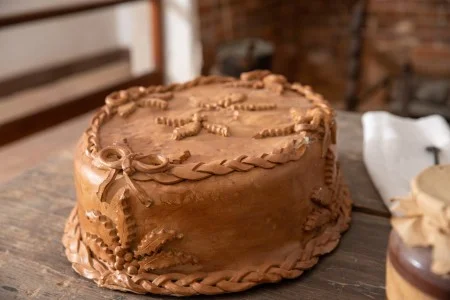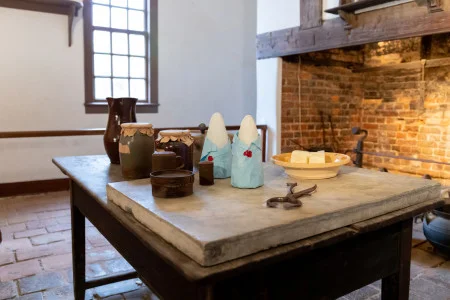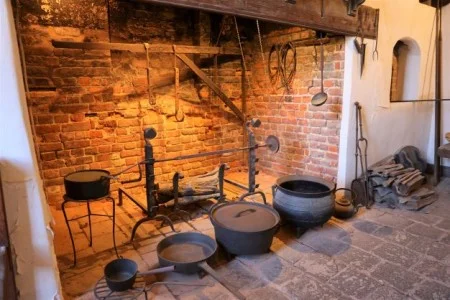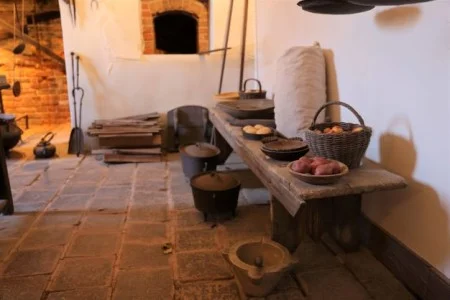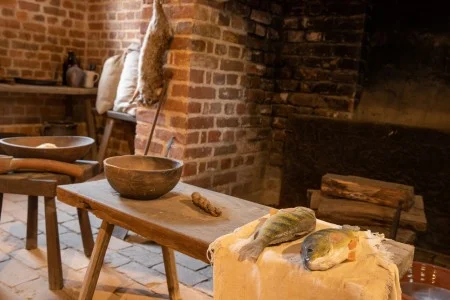The cooks have finished making a Christmas pie, which sits on the table in the kitchen, ready for the following day’s dinner. Savory Christmas pies were a holiday custom in the Washington household, mentioned in letters as the season approached. For example, in November 1786, David Humphreys, a former military aide to George Washington, expressed his disappointment that he could not be at the estate for the holidays and thus would “not have the felicity of eating Christmas Pie at Mount Vernon.” In his post-Christmas reply, Washington voiced regret that Humphreys had not been with them to “aid in the Attack of Christmas Pyes…on which all the company…were hardly able to make an impression.”
Hannah Glasse’s The Art of Cookery (which Martha Washington owned) contains a recipe for Yorkshire Christmas pie. This elaborate dish called for a turkey, goose, fowl, partridge, and pigeon to be boned and seasoned with mace, nutmeg, cloves, and black pepper. The five birds were then placed one inside the other “so it will look only like a whole turkey” (an 18th-century version of a “turducken”). Once inside the crust, this poultry was surrounded by additional wild game, such as rabbit and woodcock. Then, four pounds of butter were added and the whole pie baked in “a very hot oven” for at least four hours.
Savory meat pies like this were sturdy and could last for days. Glasse notes that “these pies are often sent to London in a box as presents; therefore the walls must be well built.”
As part of the Yuletide celebrations, Martha Washington arranged for a type of fruited cake known as a "Great Cake" to be baked and served as a dessert on the last of the twelve days of Christmas, known as Epiphany or Twelfth Night. Martha Washington's Great Cake was a large celebratory cake consisting of fruit and spices. Here, Washington’s housekeeper, Mrs. Forbes, and his two enslaved cooks, Nathan and Lucy, begin gathering ingredients to make this traditional delicacy. They have gathered flour, sugar, butter, and eggs.
Great Cakes were a common dessert in the Colonial Era and tended to be very large, as reflected by the list of ingredients that varied according to the version of the recipe used. One transcription of Martha Washington's Great Cake recipe utilized the following ingredients: a peck of flour, three quarters of a pound of sugar, three pounds of melted butter, and seven pounds of currants. Added to these ingredients were four grated nutmegs, cloves, cinnamon, mace, caraway seeds, water, and salt. Other ingredients included yeast derived from barm (the foam that rises to the top of fermented liquor), and liquid derived from posset, a warm mixture of ale and cream.
The cake would most likely have been baked in a medium oven in a large mold so that it would have risen, with the oven's heat reduced once the cake started to rise and firm. The end result was a risen cake similar to panettone, the Italian delicacy that lies somewhere between a cake and bread in texture, which is also commonly eaten at Christmas. However, Martha Washington's Great Cake would have had a denser texture than panettone and contained greater quantities of fruit and spice than the Italian sweet.
Among Martha Washington's surviving papers was a recipe written out by her granddaughter Martha Parke Custis that utilized different ingredients and quantities from more common Great Cake recipes. Custis' recipe included forty eggs worked into four pounds of butter, four pounds of sugar, five pounds of flour, and an equal quantity of fruit. The recipe also called for mace and nutmeg, and to these dry ingredients wine and brandy were added.
Though Martha Washington was adept at entertaining, she did not cook everything herself. Instead, Mount Vernon’s enslaved servants were enlisted in the kitchens and would have prepared the Great Cake.
